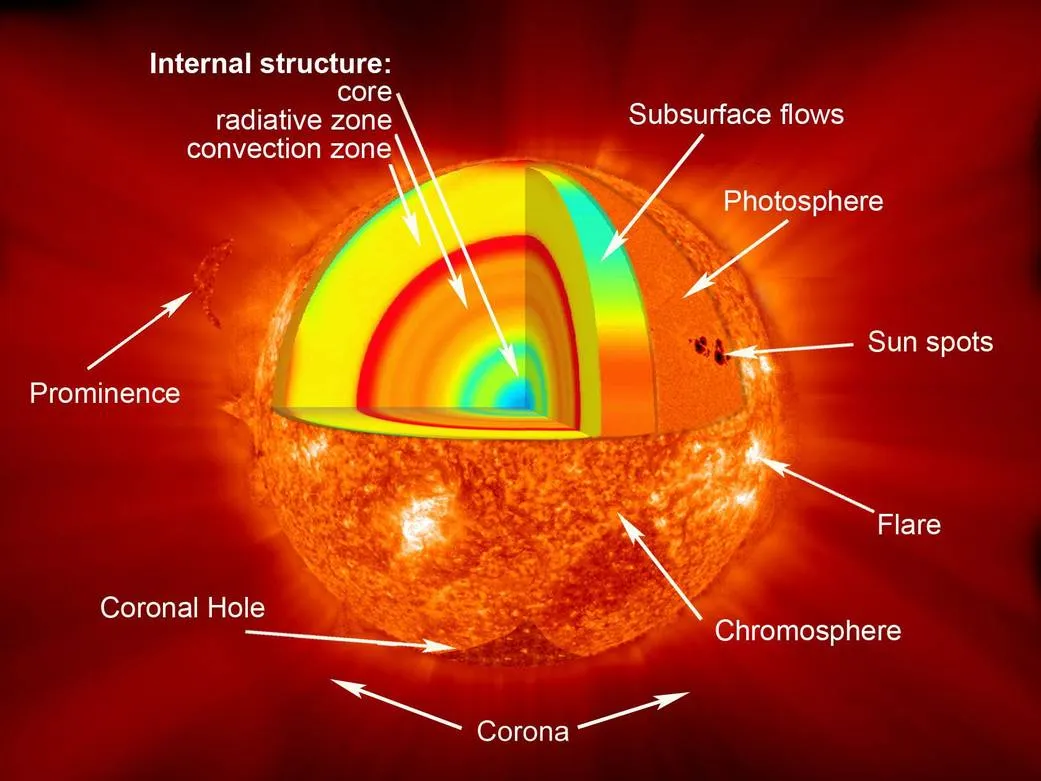The hottest part of our Sun is its core, where nuclear fusion reactions create temperatures up to 15 million degrees Celsius (ºC) or 27 million degrees Fahrenheit (ºF), according to NASA.
Here, 500,000 kilometres below the surface, immense pressure fuses hydrogen molecules together to make helium, releasing energy as heat and light in the process.
This heat radiates out from the core, through the 700,000 km of the Sun’s radius.
But how hot is the rest of the Sun?

The question 'how hot is the Sun' doesn't have a single answer!
For exampke, the region that encircles the Sun's core, called the radiative zone, gets its heat from the core, and is around 7 million ºC at its closest point to the centre and around 2 million ºC in its outermost point.
Surrounding the radiative zone is the convection zone, which quickly loses heat as it is carried away from the core to the surface of the Sun.
The temperature drops over this region from 2 million ºC to just 5,800ºC at the Sun’s surface.
Called the photosphere, the surface is the part of the Sun we see from Earth and it is actually the coolest region, relatively speaking.

The Sun's corona is hotter than its surface
There's something of an anomaly when we consider how hot the Sun is.
Interestingly, the atmosphere around the Sun, called the corona, is hotter than its surface.
Scientists don’t yet know why the corona can reach temperatures of 1 million ºC, though the leading hypothesis is that energy travels via the Sun’s magnetic field out into the atmosphere where it ‘explodes’ as a burst of heat.
We get ever closer to answering this question, among others, thanks to the NASA Parker Solar Probe passing through the corona.
Stars hotter than the Sun
Our Sun is by no means the hottest star. That accolade goes to the star WR 102, which is found in the constellation of Sagittarius and has a surface temperature of over 200,000ºC.
The brightest of stars in our night sky, Sirius, has a surface temperature of 9,600ºC, while Alpha Centauri A, the Earth’s nearest yellow dwarf star (like that of our Sun) is 5,500ºC at its surface.
